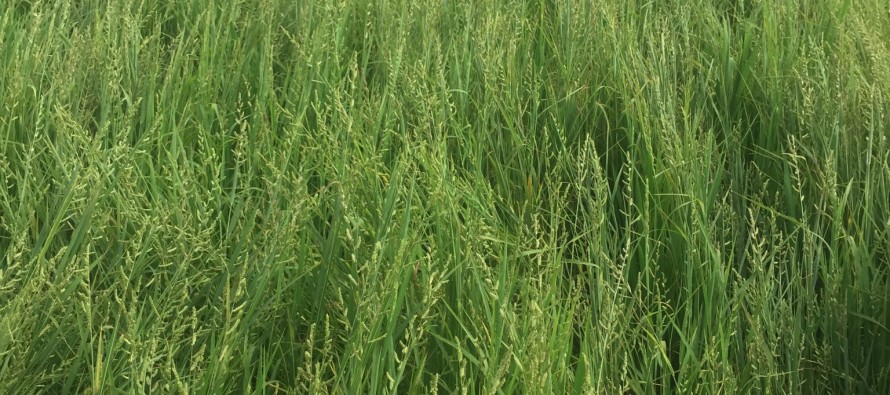Weed Spectrums in Mississippi Rice

Related Articles
- Rice Variety Trial Results For 2010, Plus Rice Research Report 0
- Flag The Technology 0
- Rice Seeding Rate Calculator and Chart 0
Latest Tweets
 Every four years, the Southern Weed Science Society (SWSS) conducts a survey of the most common and most troublesome weeds of different crops across the southern states http://www.swss.ws/publications/weed-surveys/). Information for the surveys is provided by research/extension weed scientists from each state in the region. Examination of these surveys over time provides a good indication of how the weed spectrum within each crop and state is evolving.
Every four years, the Southern Weed Science Society (SWSS) conducts a survey of the most common and most troublesome weeds of different crops across the southern states http://www.swss.ws/publications/weed-surveys/). Information for the surveys is provided by research/extension weed scientists from each state in the region. Examination of these surveys over time provides a good indication of how the weed spectrum within each crop and state is evolving.
Barnyardgrass was the most common and troublesome weed of Mississippi rice in all surveys since 2000. Other weeds on the SWSS surveys of Mississippi rice in 2000 and 2004 were fairly predictable and included red rice, hemp sesbania, yellow nutsedge, ducksalad, and a variety of morningglory species.
Amaranthus, or pigweed, species were not listed among the top 10 most common or troublesome weeds of Mississippi rice in 2000 or 2004. However, by the mid-2000s, pigweed, especially Palmer amaranth, was rapidly becoming the most problematic weed for traditional Mississippi row crops. “Pigweed” was listed as the fourth most common and troublesome weed of Mississippi rice in the 2008 SWSS weed survey, but a species was not specified. By 2012, Palmer amaranth was second only to barnyardgrass in the lists of most common and troublesome weeds of Mississippi rice, and it retained that position in the 2016 survey.
Although not listed among the most common weeds, Texasweed and spreading dayflower were added to the list of troublesome weeds in the 2008 survey. Problems with volunteer Roundup Ready soybean were also a problem in the late 2000s. Amazon sprangletop was listed in all surveys since 2000; however, it has held the second or third slot in surveys of troublesome weeds of Mississippi rice since 2008. More recently, rice flatsedge was added to both lists in the 2016 survey. Most rice flatsedge in Mississippi is resistant to acetolactate synthase (ALS)-inhibiting herbicides.
The addition of difficult to control broadleaf weeds like Texasweed and spreading dayflower along with increasing problems with Amazon sprangletop and ALS-resistant rice flatsedge are a product of the popularity of the Clearfield system. The introduction of effective residual herbicides such as quinclorac and Command in the 1990s followed by commercialization of the Clearfield technology in the early 2000s changed herbicide programs in southern U.S. rice, and these advancements were responsible for a reduction in the total pounds of herbicides applied to rice.
The Provisia rice technology will be launched within the next 2 to 3 years. Provisia herbicide represents a different mode of action from Newpath. Therefore, spectrum of control, options for tank mixing, and residual control will be somewhat different in Provisia compared with Clearfield rice. Therefore, if adoption of Provisia is widespread, changes in the weed spectrum are likely after a few years. It is the responsibility of weed scientists, manufacturers, consultants, distributors, and growers to acknowledge this and attempt to keep pace with Mother Nature in order to maintain productivity.




Let me tell You a sad story ! There are no comments yet, but You can be first one to comment this article.
Write a comment